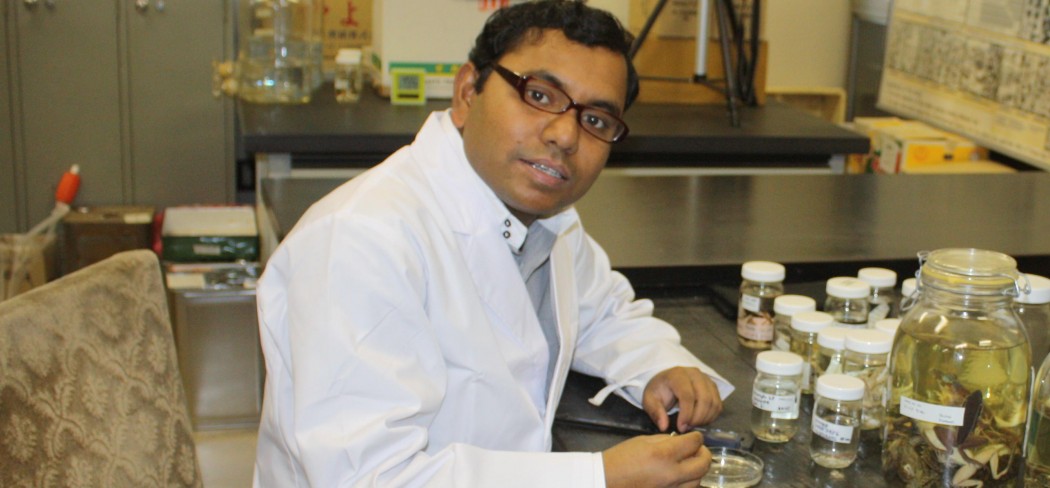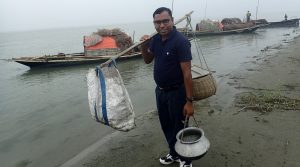Figure: Trying to catch the fish as well as adapt with the targeted fishermen life style.
The Brahmaputra drainage system has been originated from the Manasarovar Lake region, near the Mount Kailash, located on the northern side of the Himalayas in Burang County of Tibet, China. Later it enters into Arunachal Pradesh, India and flows southwest through the Assam Valley as Brahmaputra. Then, it enters into Bangladesh through Kurigram district and divided into two parts near to Dewangonj (Northen part of Jamalpur district): 1) the Brahmaputra (also known as old Brahmaputra) and the Jamuna River. Warm water temperatures, plentiful rainfall, and nutritive silty clay-loam soil make the Brahmaputra drainage system is big resources for icthyofauna in Bangladesh. But many species are now under threat due to unsustainable fishing practices, invasive species, and habitat alteration and loss. In addition, anthropological activities pose thereat of the entire ecosystem in Bangladesh. Therefore, sustainable management of the aquatic resources of the region is urgently needed to conserve the icthyofauna. A prerequisite for this is a careful and accurate assessment of fish species to measure suitable conservation policy for the targeted species.


